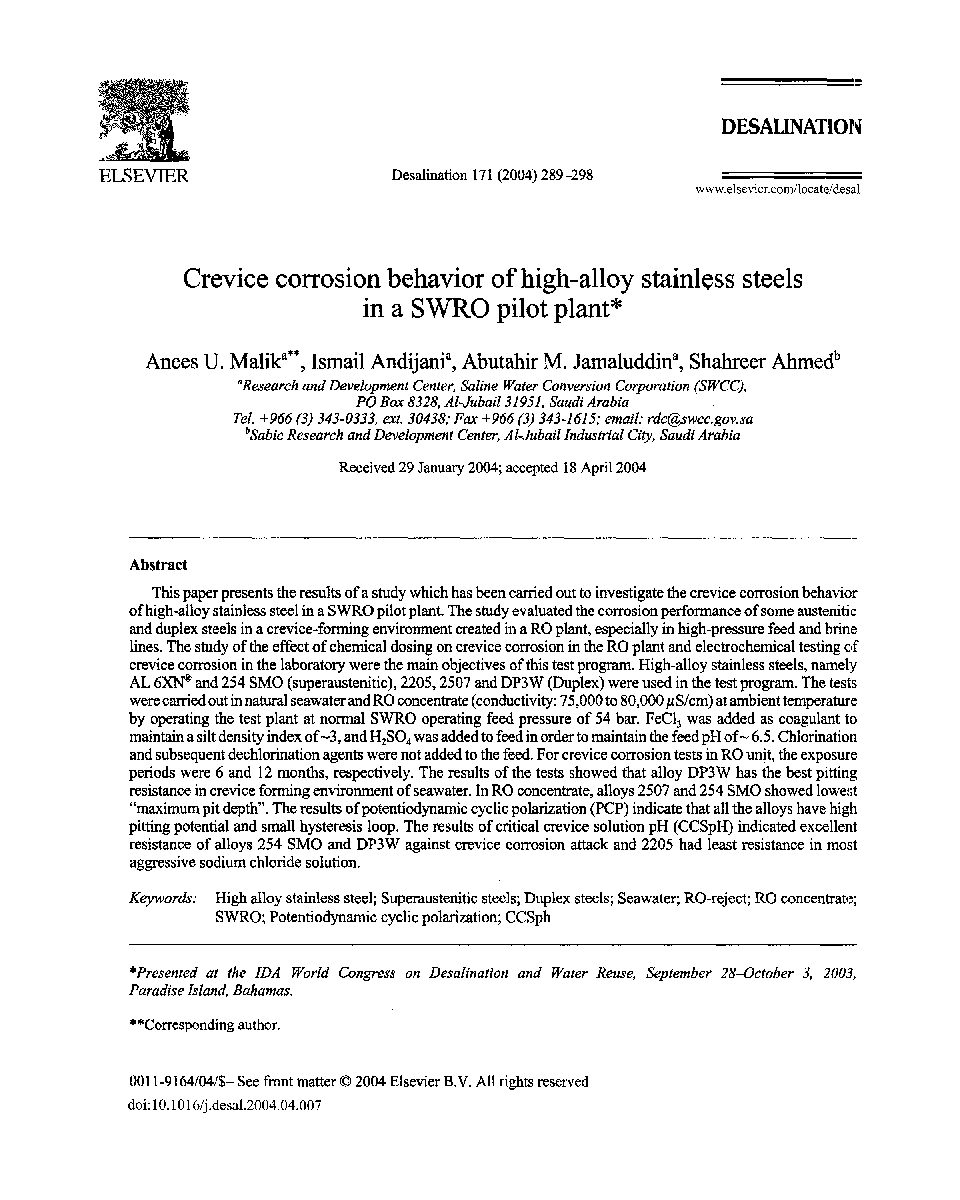| Article ID | Journal | Published Year | Pages | File Type |
|---|---|---|---|---|
| 10386289 | Desalination | 2005 | 10 Pages |
Abstract
This paper presents the results of a study which has been carried out to investigate the crevice corrosion behavior of high-alloy stainless steel in a SWRO pilot plant. The study evaluated the corrosion performance of some austenitic and duplex steels in a crevice-forming environment created in a RO plant, especially in high-pressure feed and brine lines. The study of the effect of chemical dosing on crevice corrosion in the RO plant and electrochemical testing of crevice corrosion in the laboratory were the main objectives of this test program. High-alloy stainless steels, namely AL 6XN® and 254 SMO (superaustenitic), 2205, 2507 and DP3W (Duplex) were used in the test program. The tests were carried out in natural seawater and RO concentrate (conductivity: 75,000 to 80,000 μS/cm) at ambient temperature by operating the test plant at normal SWRO operating feed pressure of 54 bar. FeCl3 was added as coagulant to maintain a silt density index of â¼3, and H2SO4 was added to feed in order to maintain the feed pH of â¼ 6.5. Chlorination and subsequent dechlorination agents were not added to the feed. For crevice corrosion tests in RO unit, the exposure periods were 6 and 12 months, respectively. The results of the tests showed that alloy DP3W has the best pitting resistance in crevice forming environment of seawater. In RO concentrate, alloys 2507 and 254 SMO showed lowest “maximum pit depth”. The results of potentiodynamic cyclic polarization (PCP) indicate that all the alloys have high pitting potential and small hysteresis loop. The results of critical crevice solution pH (CCSpH) indicated excellent resistance of alloys 254 SMO and DP3W against crevice corrosion attack and 2205 had least resistance in most aggressive sodium chloride solution.
Related Topics
Physical Sciences and Engineering
Chemical Engineering
Filtration and Separation
Authors
Anees U. Malika, Ismail Andijani, Abutahir M. Jamaluddin, Shahreer Ahmed,
